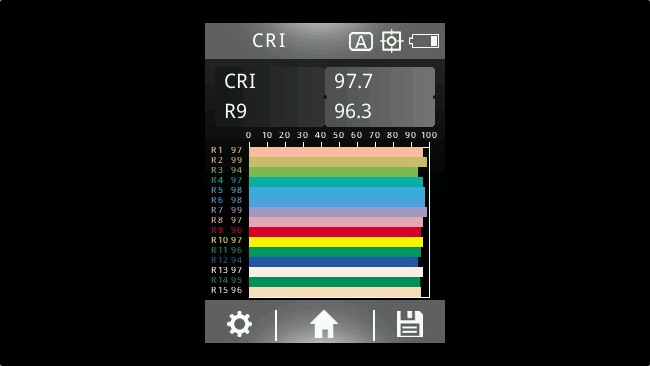
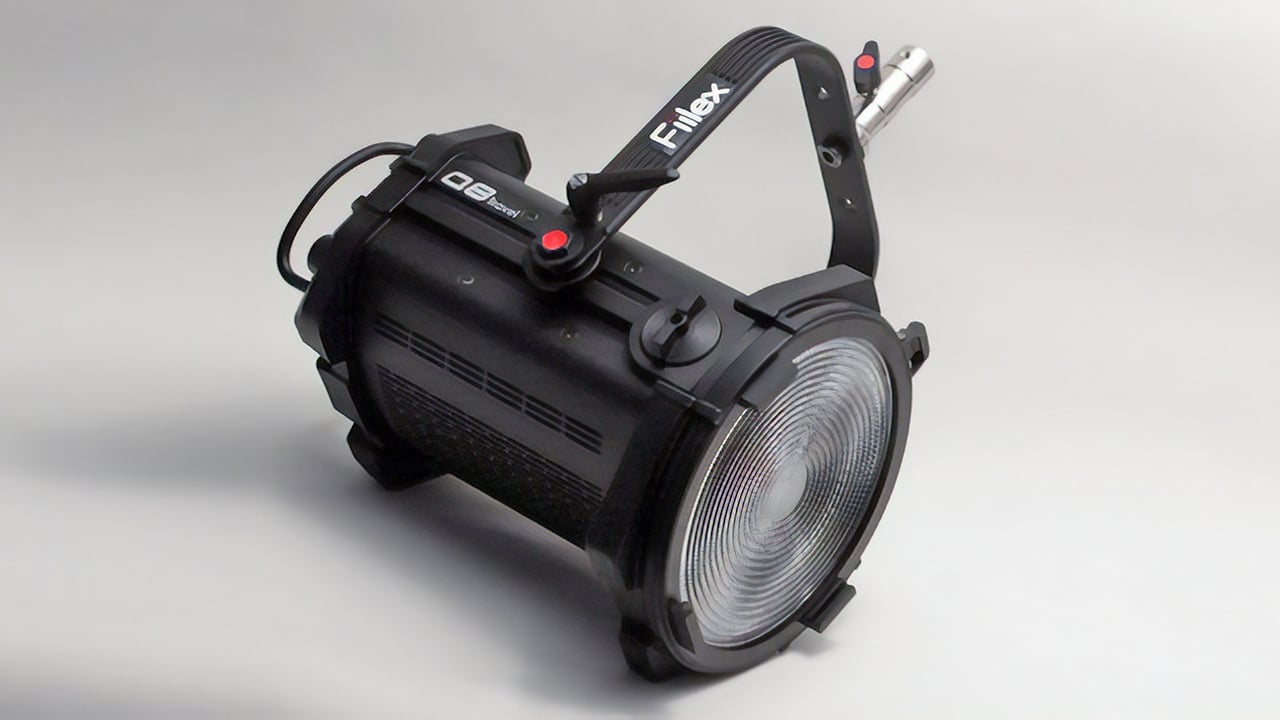
We give the Fiilex Q8 Travel LED light a thorough test to find out if it should form part of your kit bag.
The only sort of lights which usually colour match accurately are tungsten halogen incandescents. HMI, fluorescents and LEDs can have very good colour quality, but most shoots still need colour correction filters to create consistency. A better solution would be to make lighting adjustable, not only in the blue-to-orange axis of the colour temperature but also in the green-to-magenta direction. If this were added, any roughly-white light could be matched.
Very few LED lights can do this, but Fiilex's Q8 Travel is one of them. It is a medium-sized fresnel delivering up to 300W, with a 48V power supply connecting to the head via a 3-pin XLR cable. Batteries are an option, although it would require four 12V batteries in series or perhaps one of Cine Power International's 48V DC driver devices run from one of their big blocks.
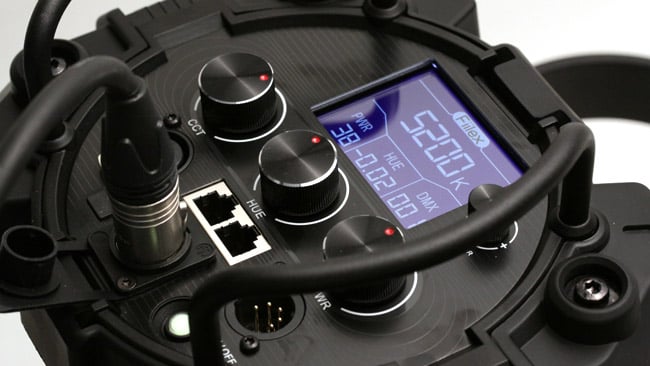
The control panel, with its large TFT display
Given that LED is typically around four times the efficiency of tungsten, the Q8 should be the equivalent of a good 1kW tungsten fresnel. It might even be slightly better still since the LED emitter fires more light in a useful direction than a tungsten-halogen or HMI lamp would. We value fresnels because they are flexible and produce an easily-modified beam, but a lot of energy from conventional sources is fired into the walls of a fresnel housing. It is not the most efficient way to direct light. LED makes a fresnel less lossy than other technologies, and the compact circular LED module in the Q8 makes for a clean, well-defined beam.
This is the same LED emitter array used in several other Fiilex products. Output ranges from 5300lx at 2800K to 9500lx at 5200K, measured in full flood at one metre. This change is normal for LEDs which generally rely on converting blue light to white light. At lower colour temperatures, more of the blue light must be converted, which is a lossy process. Also, at intermediate colour temperatures, both the warmer- and cooler-coloured parts of the LED array are active, making high output easier to achieve. At extremes, either the warmer or cooler elements won't be running so hard, so it's no surprise to see output fall off slightly beyond 5200K, to around 8300lx at 6500K. In spot mode, output measures 47,500lx at 2800K, 90,000lx at 5200K and 80,000lx at 6500K.
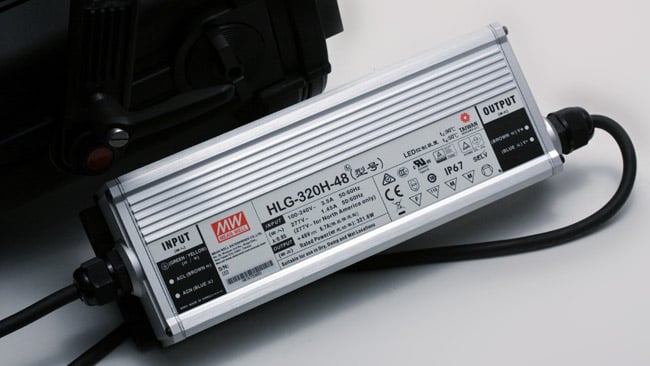
The power supply is separate and silent. A clamp is supplied to hold it onto a stand
It's been possible to make bright LEDs for a while, though. What's crucial is colour quality, and it's a pleasure to report that the Fiilex Q8 Travel has one of the most accurate outputs we've ever seen. Tests at 2800K, 3200K, 4210K, 5200K and 6500K revealed no TLCI reading below 93, which occurs at 100% output and the minimum colour temperature of 2800K. Cooling off slightly to 3200K, TLCI improves to above 99 and remains above 98 through 5200K. The difficult R9 red and R12 blue CRI test patches perform well, with blue exposed best at higher colour temperatures and the red better at lower ones. The worst case is red at 6500K, which falls off from an excellent 91 at 50% to a still-acceptable 75 at 100%; at 2800K, the R12 result remains a solid 80 at full power.
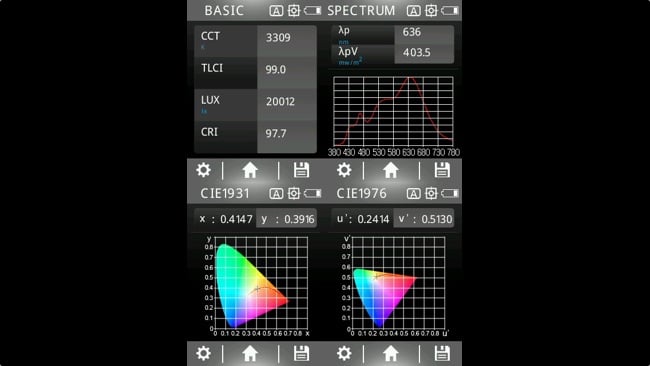
That's some very, very good colourimetry
There is a slight drift in colour temperature at low output and extremes of colour temperature. The 2800K setting drifts about 100K warmer and the 6500K setting about 400K cooler below 25% and 5%. The error at 2800K, a mired shift of 18, is the equivalent of approximately a one-eighth CT straw filter. The error at 6500K, while larger when expressed in kelvins, is a far smaller mired shift of 11, which is barely worth correcting. These are very small errors – no other lighting technology has such good dimming, and very few LEDs either. Again, with midrange colour temperature settings, drift at low output is reduced to a level that's hard to measure.
The Q8's party piece is undoubtedly the green-magenta adjustment. The control reads out in a range of +0.25 to -0.25, which looks like a reference to plus or minus-green gels. Set to 3200K, the light places at 0.415, 0.395 on the CIE 1931 chromaticity diagram, essentially nailing the blackbody curve. Full plus-green moves the dot to 0.421, 0.410, and adjusting to full minus-green moves to 0.406, 0.369. This is a comfortable range that would permit the light to match ageing HMIs, changeable daylight or cheap practical fluorescents in a way that's very useful.
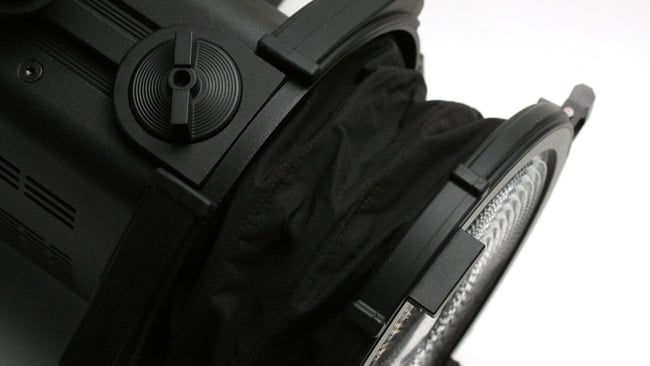
The lens extension is surrounded by a black fabric cowl
So it's very accurate and highly adjustable.
The Q8 is nicely engineered. The control panel feels solid doesn't rattle. It can be locked entirely and about the only UI addition that would be nice is a way to lock the colour temperature and magenta-green controls while leaving the intensity control active. At the moment, it's too easy to knock the colour controls while reaching for intensity, which should be set-and-forget. The fabric cowl around the lens extension is not as pretty as, say, Zylight's rubber bellows on the F8 series, but it's functional. Rubber buffers protect the front and rear edges, and a raised grab rail protects the control panel while providing something to hold for focusing. As with all LEDs at this power level, forced-air cooling is a must, but the Q8 is no noisier than any other option. The power supply is not fan-cooled.
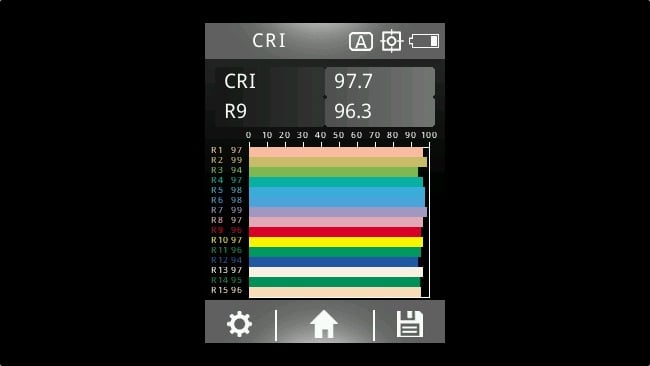
Holy excellent R9 results, Batman
It's not cheap, but at $3000 the Q8 competes fairly with the biggest names out there. It's not a lightweight; the fully cased kit tips the scales at over 20 kilos, with the head itself listed as 7.35 kilos. The Q8 is heavy compared to the high-portability options, though something like an Arri L7-Dt is heavier, less powerful, less flexible, and about the same price. There's a very, very tiny amount of visible stepping in the fade to black at power levels indicating below 3%, and yes, a hyper-sensitive modern camera such as a Sony A7s or Panasonic Varicam 35 might conceivably see it, but again, it's still well ahead of the pack. Some LEDs chop to black at 10%.
Finally, if this review seems to have taken an unusually scientific approach, that's because we've rarely seen a variable colour temperature LED which is good enough to justify this level of analysis. The Fiilex Q8 Travel does.
Tags: Production


Comments